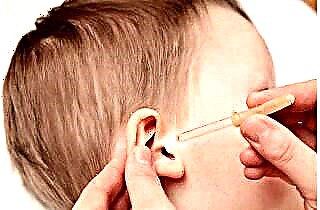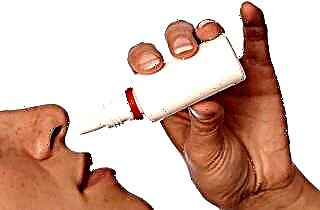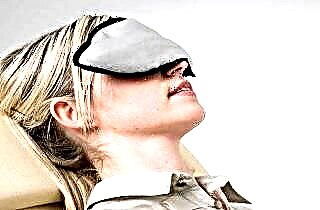Children's ear drops differ significantly from those intended for adults. They are less aggressive, have only a targeted effect and prevent the occurrence of allergies. In addition, for each individual case, the tool is selected individually. Indeed, in some cases, children's ear drops are contraindicated for use, as they can cause serious disturbances, up to complete hearing loss.
How to choose a drug
 When a baby suffers from pain, the question arises: how to instill a child's ear? Often, parents begin to engage in amateur performances, they recall popular advertisements, advice from friends or methods of traditional medicine. However, this is a completely wrong approach, which can cost a tiny fraction of your health. Only a doctor can determine which ear drops for children are needed in your case. The prescription is written out based on the following factors:
When a baby suffers from pain, the question arises: how to instill a child's ear? Often, parents begin to engage in amateur performances, they recall popular advertisements, advice from friends or methods of traditional medicine. However, this is a completely wrong approach, which can cost a tiny fraction of your health. Only a doctor can determine which ear drops for children are needed in your case. The prescription is written out based on the following factors:
- location of pain (middle ear, outer or inner);
- the cause of the pain (sulfur plugs, foreign objects in the ears, water ingress, sore throat or adenoids);
- the nature of the pain (pulling, shooting, sharp);
- the age of the baby;
- the presence of personal intolerance to medications.
Only a thorough examination and analysis will help to make the correct diagnosis and choose an effective therapy.
In some cases, ear drops are prescribed for children along with antibiotics. Comprehensive treatment is necessary if the disease is neglected and can lead to serious complications.
Important for parents! Even if your child suffers very much from ear pain, do not rush to drip pain relievers, they may contain substances that negatively affect the auditory nerve in case of a violation of the eardrum. It is best to give the baby an anesthetic syrup or tablets to relieve acute symptoms, and go to an appointment with an otolaryngologist to diagnose the disease.
Otitis externa treatment
The external form of otitis media can be caused by minor trauma to the auricle, water getting into it while bathing, and other injuries. In this case, there is a strong, but not shooting pain, it can disturb the baby when you press on the ear or when chewing. Most often, this disease occurs in children aged 3-8 years.
 The following drops are suitable for treatment:
The following drops are suitable for treatment:
- "Sofradex". Dexamethasone provides an anti-inflammatory effect, and the antibiotics neomycin and gramicidin eliminate pathogenic bacteria, the course of administration is no more than 7 days. For infants, the use of the drug is possible only under the supervision of a doctor.
- "Garazon". It has a combined effect on the disease: gentamicin fights a wide range of bacteria, and betamethasone relieves inflammation and gives an antihistamine effect. Drops for ear pain are not recommended for children under 6 years of age.
- Anauran. Fights against pathogenic bacteria and has a local analgesic effect. Sometimes it causes minor side effects such as flaky skin and itching that go away quickly. In general, it is well tolerated by children.
- "Otofa". Kills most pathogenic bacteria due to the presence of ripamphycin in the composition. It is prescribed even in the presence of microdamage to the tympanic membrane, the course of treatment should not last more than a week.
With external inflammation, ear drops for children that do not contain antibiotics are ineffective. In addition, they may contain alcohol, which only aggravates skin irritation.
 With this form of the disease, it is more advisable to use drugs that affect pathogenic microorganisms and relieve pain.
With this form of the disease, it is more advisable to use drugs that affect pathogenic microorganisms and relieve pain.
Such means will be ineffective:
- Otipax, as it does not contain antibiotics. But it is a very effective anti-inflammatory and pain reliever. Caution: the composition includes lidocaine, which in some cases can cause allergies.
- Otinum. A remedy that relieves inflammation and soothes pain, has antiseptic properties, can dissolve sulfur plugs, is completely contraindicated for membrane perforation and for children who have not reached 1 year of age.
Means for the treatment of otitis media
 Inflammation of the middle ear most often develops under the eardrum, it is provoked by diseases such as tonsillitis, runny nose. Drops for pain in the ear in a child are prescribed by a doctor, they should have an analgesic and antiseptic effect.
Inflammation of the middle ear most often develops under the eardrum, it is provoked by diseases such as tonsillitis, runny nose. Drops for pain in the ear in a child are prescribed by a doctor, they should have an analgesic and antiseptic effect.
The most effective remedies:
- Otipax;
- Anauran;
- Otinum.
These drops in children's ears are prescribed with caution, since most of them cannot be used if the integrity of the eardrum is violated. They quickly relieve pain, which is most often shooting, and therefore very excruciating for babies.
Removing sulfur plugs
A buildup of sulfur can be the reason a child has ear pain. What to instill in this case for the baby, many parents do not know. There are a number of drugs that are completely safe for health and help fight the problem. You can choose from the most popular means:
 Remo-Wax. The drug is non-aggressive, does not contain antibiotics, hormones and other substances that can negatively affect health, therefore it is prescribed even to infants.
Remo-Wax. The drug is non-aggressive, does not contain antibiotics, hormones and other substances that can negatively affect health, therefore it is prescribed even to infants.- "A - Cerumen". Water-based drops, gently push the wax out of the ear canal, contain surfactants that act on the surface. Assigned to infants.
- "Aqua Maris Oto". A water-based product, in fact, is an isotonic solution, completely harmless to the body. Allowed for children from 4 years old, but absolutely contraindicated in case of perforation of the membranes or inflammatory processes in the ears.
Rules for the use of drugs
How to properly drip medicine into the ears of a child, not every parent knows. Babies react painfully to this procedure, therefore it is necessary to make it as easy as possible. To do this, you should follow these rules:
 Before dripping drops into the child's ear, they need to be heated to room temperature, but no more. To do this, you can hold the liquid in your hands for several minutes.
Before dripping drops into the child's ear, they need to be heated to room temperature, but no more. To do this, you can hold the liquid in your hands for several minutes.- Drops for pain in the ear in a child are administered only after thorough and careful cleaning of the ear canal with a cotton swab.
- For very young children, during the instillation of the drug, the ears are pulled down, and for older children, a little back. After the medicine has reached its destination, you need to gently press on the ear tragus so that the substance is evenly distributed in it.
- Drops in the ears of children, when very inflamed areas hurt, are injected while lying on a healthy side, after the procedure, the sore ear is closed with a cotton swab. It is recommended to lie down quietly for a few minutes.
- If the bottle is equipped with a special dispenser, then it is necessary to warm up only that part of the medicine that will be needed for administration for 1 time; for this, the bottle must be turned over and the tip of the pipette must be held in your hands.
Conclusions
Medicines for the treatment of children should be prescribed only by a doctor, since they all have their pros and cons, and sometimes they can even be dangerous to the health of babies.
Antibiotic ear drops for children are recommended to be used after a thorough examination and testing, some of them are contraindicated in case of perforation of the eardrum and can lead to complete hearing loss.
Under no circumstances do self-treatment, as this can cause irreversible changes in the brain and other organs!

 Remo-Wax. The drug is non-aggressive, does not contain antibiotics, hormones and other substances that can negatively affect health, therefore it is prescribed even to infants.
Remo-Wax. The drug is non-aggressive, does not contain antibiotics, hormones and other substances that can negatively affect health, therefore it is prescribed even to infants. Before dripping drops into the child's ear, they need to be heated to room temperature, but no more. To do this, you can hold the liquid in your hands for several minutes.
Before dripping drops into the child's ear, they need to be heated to room temperature, but no more. To do this, you can hold the liquid in your hands for several minutes.

